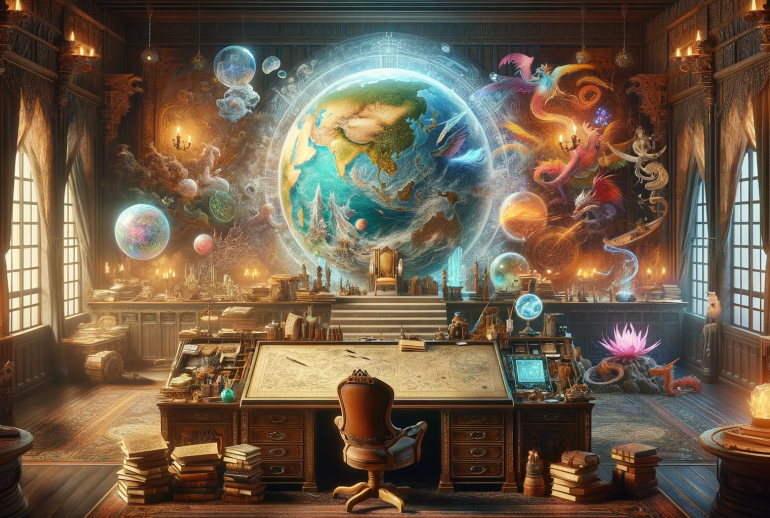In the realm of storytelling, the setting is not merely a backdrop; it’s a living, breathing entity that can enhance your narrative’s depth and captivate your readers. Crafting vivid settings involves the art of world-building and immersive descriptions that transport readers to the heart of your story’s environment. In this article, we’ll explore techniques and strategies for creating settings that not only serve as a backdrop but become an integral part of your storytelling.
Why Vivid Settings Matter
Before delving into the techniques, let’s understand why vivid settings are crucial to storytelling:
Enhanced Immersion: Well-developed settings immerse readers in the story, making them feel like they are part of the world you’ve created.
Atmosphere and Mood: Settings set the tone for your narrative, conveying emotions, tension, and ambiance that complement the plot.
Character Interaction: The setting can influence character actions and decisions, adding depth to your character development.
Memorable Experience: Readers remember stories with unique, vivid settings, making your work stand out in their minds.
Techniques for World-Building and Descriptive Immersion
Let’s explore techniques to create vivid settings that resonate with readers:
1. Visual Imagery:
- Sensory Detail: Engage readers’ senses by describing sights, sounds, smells, tastes, and tactile sensations.
- Vivid Descriptions: Use descriptive language that paints a vivid mental picture, without overloading with excessive detail.
- Symbolism: Utilize symbolic elements within the setting to add depth and layers to the story’s themes.
2. World-Building:
- Consistency: Ensure consistency in the rules and logic of your created world.
- History and Culture: Incorporate the history, culture, and societal norms of the setting to make it feel authentic.
- Unique Elements: Add unique and memorable features that distinguish your world from others.
3. Character-Setting Interaction:
- Character Reactions: Show how characters interact with the setting through their reactions, emotions, and behavior.
- Setting as a Character: In some cases, the setting itself can become a character, with its own motivations and influence on the plot.
4. Layered Description:
- Progressive Details: Reveal aspects of the setting progressively, allowing readers to explore and discover new facets.
- Emotional Layers: Describe the setting’s impact on characters’ emotions and inner thoughts.
5. Show, Don’t Tell:
- Actions and Impact: Instead of telling readers about the setting, show its impact through characters’ actions and dialogue.
- Symbolic Actions: Characters’ actions within the setting can symbolize their emotional state or inner conflicts.
6. Pacing and Mood:
- Match Mood and Setting: Ensure the setting aligns with the mood of the scene or the emotional state of the characters.
- Pacing and Descriptions: Adjust the pacing of your descriptions to match the scene’s intensity.
7. Research and Inspiration:
- Real-World Research: If your setting is inspired by real-world locations, conduct research to capture authentic details.
- Inspiration Sources: Seek inspiration from travel, art, literature, or personal experiences to infuse uniqueness into your settings.
8. Beta Reader Feedback:
- Test the Immersion: Share your work with beta readers to gauge the level of immersion they experience.
- Address Feedback: Use their feedback to refine and enhance your settings.
Case Studies: Memorable Settings in Literature
Explore the settings from these well-known literary works and the techniques that made them memorable:
“Middle-earth” in J.R.R. Tolkien’s “The Lord of the Rings”:
- Technique: Detailed world-building, rich history, and unique creatures create an immersive fantasy setting.
“The Shire” in J.R.R. Tolkien’s “The Hobbit”:
- Technique: Simple, relatable descriptions combined with the character’s love for the setting establish a strong emotional connection.
“Hogwarts School of Witchcraft and Wizardry” in J.K. Rowling’s “Harry Potter” series:
- Technique: Merging elements of fantasy with a school setting, Rowling’s world-building introduces readers to a magical, relatable place.
Conclusion: Craft Worlds that Enchant and Inspire
Creating vivid settings is an art that involves crafting worlds that enchant and inspire readers. It’s the bridge between imagination and storytelling, inviting readers to step into your narrative’s unique universe. By utilizing techniques such as sensory detail, world-building, character interaction, and progressive description, you can weave settings that leave an indelible mark on your readers’ minds. So, embark on the journey of world-building and immerse your readers in the magic of your storytelling.



